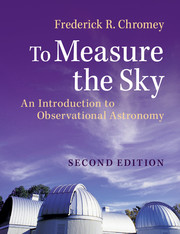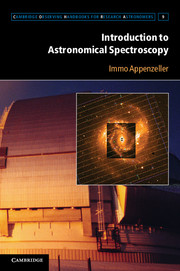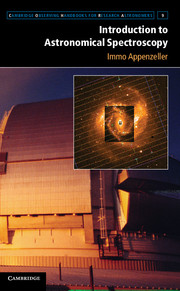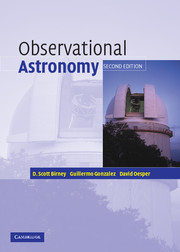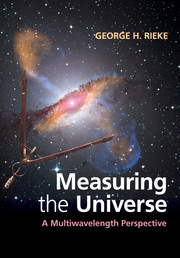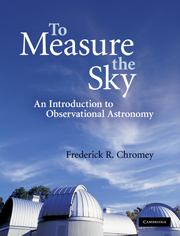To Measure the Sky
The second edition of this popular text provides undergraduates with a quantitative yet accessible introduction to the physical principles underlying the collection and analysis of observational data in contemporary optical and infrared astronomy. The text clearly links recent developments in ground- and space-based telescopes, observatory and instrument design, adaptive optics, and detector technologies to the more modest telescopes and detectors that students may use themselves. Beginning with reviews of the most relevant physical concepts and an introduction to elementary statistics, students are given the firm theoretical foundation they need. New topics, including an expanded treatment of spectroscopy, Gaia, the Large Synoptic Survey Telescope, and photometry at large redshifts bring the text up to date. Historical development of topics and quotations emphasize that astronomy is both a scientific and a human endeavour, while extensive end-of-chapter exercises facilitate the students' practical learning experience.
- Key in-text examples, figures, and end-of-chapter problems have been added or revised, and new topics added, including Gaia, the Large Synoptic Survey Telescope, and photometry at large redshifts, bringing the book up to date
- Reviews of the most relevant physical concepts, such as optics, atomic structure, and solid-state physics, and an introduction to elementary statistics provide students with the essential foundation they need
- Basic observational ideas are covered early on, supporting student practice at the observatory from the very beginning
- Online resources include figures and solution sets for instructors
Reviews & endorsements
'This is an undergraduate astronomical textbook based on lectures given by the author at Vassar College. The author has sixteen years' experience of teaching and this is clearly reflected in the presentation. The book is plentifully illustrated in black and white, and each chapter is followed by a summary and exercises for the student. … As well as the textbook material, the book finishes with ten useful appendices of tabular data. It can be recommended for its lucid style; occasionally the author betrays a wry sense of humour, such as the illustration of Fermat's principle in the way that Tarzan rescues Jane from crocodile-infested waters. The book would be especially useful at universities which have access to a well-equipped observatory.' Derek Jones, The Observatory
Product details
October 2016Paperback
9781107572560
472 pages
246 × 188 × 21 mm
1.02kg
274 b/w illus.
Available
Table of Contents
- 1. Light
- 2. Uncertainty
- 3. Place, time, and motion
- 4. Names, catalogs, and databases
- 5. Optics for astronomy
- 6. Astronomical telescopes
- 7. Matter and light
- 8. Detectors
- 9. Digital images from arrays
- 10. Photometry
- 11. Spectrometers.

